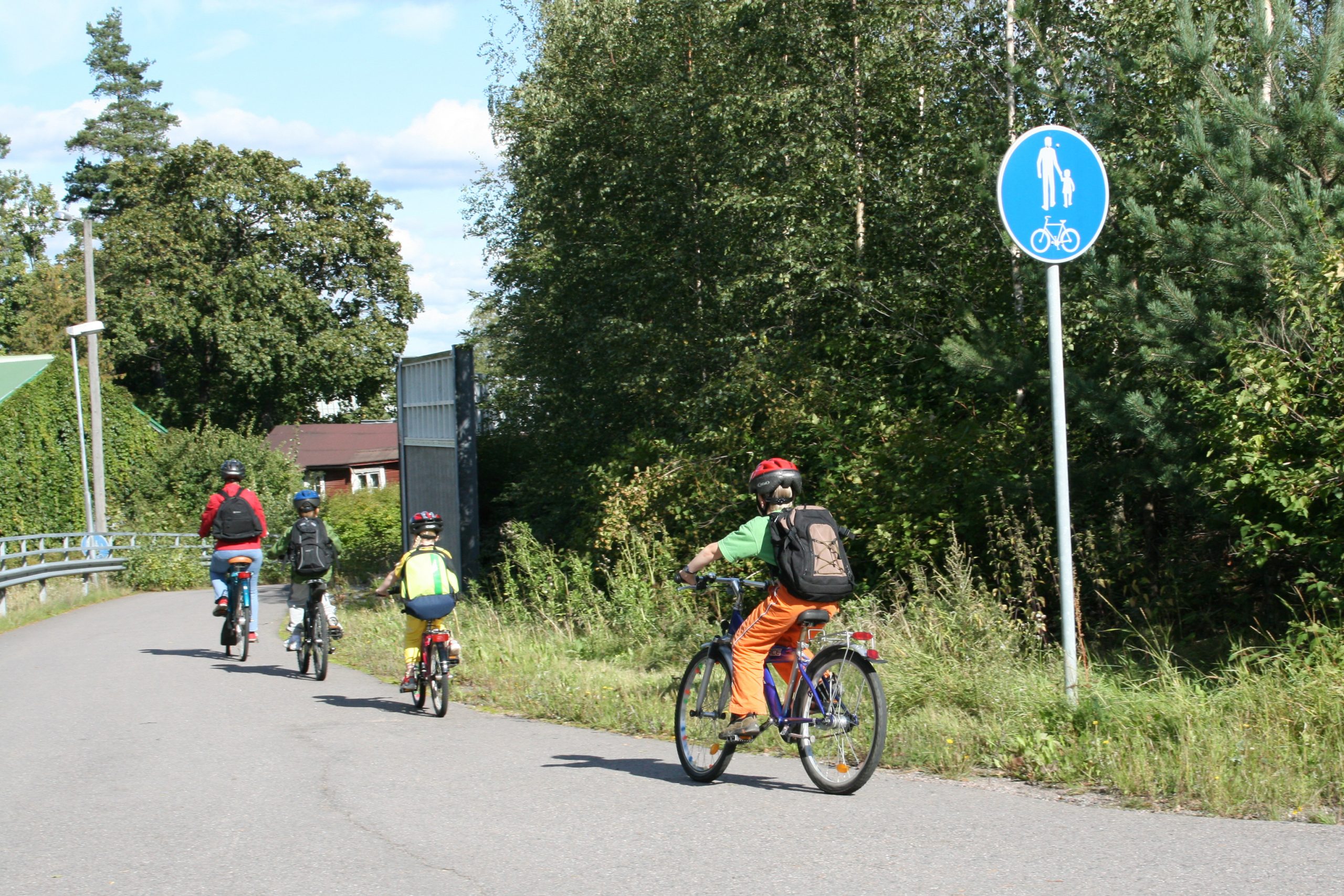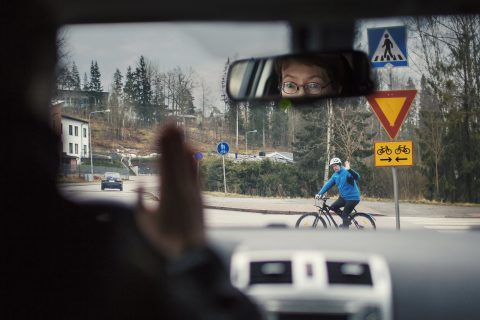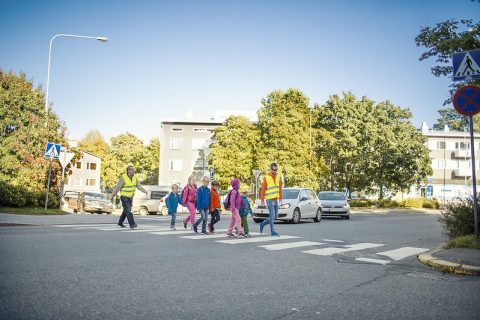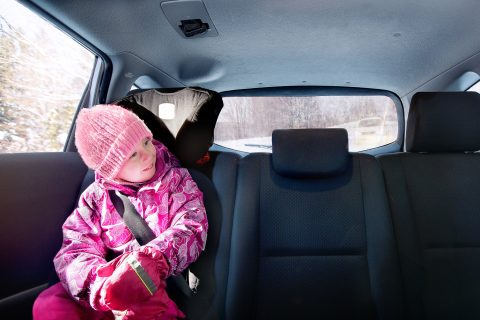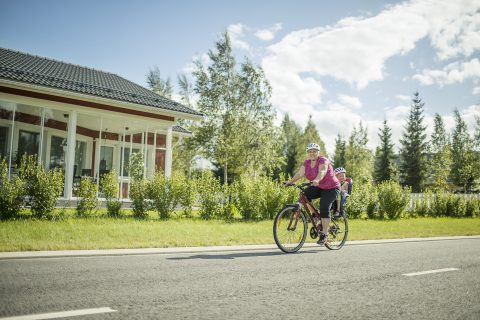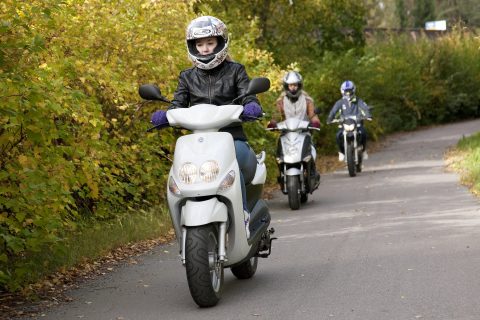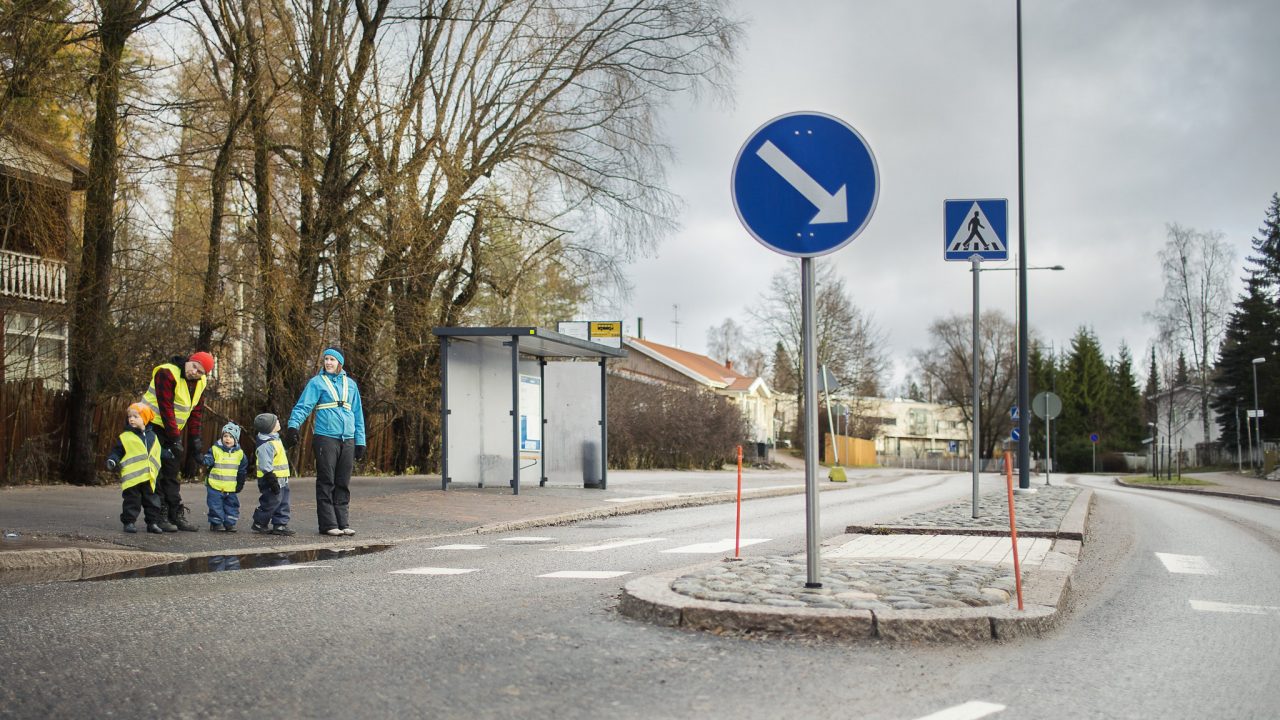
Children under school age in traffic
Guardians play an important role when children learn to move safely in traffic. Children learn best when they are on the move together with their family and see good examples of safe traffic behaviour. It is a good idea to go to different traffic environments regularly with children. This helps the adult to see what the child is already able to do and what still needs practice.
As the child grows, their ability to move around independently increases. The guardian will be important for the child’s safe traffic behaviour until their adulthood. Together with the child, the guardians should go through the routes and ensure that the child does not move around alone in an environment that is too challenging for them. Children under school age still need adult support in traffic.
The child is not yet able to make observations, or assess distances or vehicle speeds. In addition, a child may not be able to pay attention to the right details. It is also typical of children to act impulsively. The ability to assess risks will develop only with age and experience.
The power of an example
Children imitate adults in traffic behaviour and learn from their example. Traffic education for young children therefore mainly involves being a good role model: safe behaviour taking others into account, compliance with traffic regulations and using seat belts, reflectors and cycling helmets in everyday situations.
In the use of safety equipment, the example of a guardian is irreplaceable: attach reflectors (Opens in a new window) to clothes and wear a cycling helmet. (Opens in a new window) Make sure that other adults moving around with the child also use suitable safety equipment.
In addition to safety, it is good to remember to set an example when driving a car. According to studies, children copy their parents’ driving style when they become adults. Do you have a lead foot, or are you a calm driver? Do you use a mobile phone while driving? Do you hope your child will behave like you as a driver in the future?
Traffic education for children of different ages
The child’s age and level of development should be taken into account when in traffic with the child. You are familiar with the strengths of your child and things that still need practice when you regularly use different traffic environments with the child.
Children under four years of age
Small children always travel with an adult in traffic. They are not yet ready to travel independently and safely in traffic, even if they are quick in their movements.
It is important to teach a small child the difference between the playground and traffic. However, the child may not necessarily remember to comply with the agreed limits of the playground, and so they should be supervised.
Traffic education is a review of safe conduct in everyday life. The importance of an adult as a child’s role model is particularly important. In daily activities, it is useful to explain why an adult always attaches a child to a safety seat or a bicycle child seat and why the helmet and reflector are used.
It is important to travel in traffic with the child every day. While adults observe different traffic situations together with the child and explain their own activities, the child learns about traffic safety.
For example, you can describe your own actions: “Let’s look in both directions before crossing the road, to make sure there are no cars”, “See how well we can see that pedestrian because he has a reflector”, “What a large heap of snow. A motorist may not see a small child behind it”.
The sudden acceleration of walking speed to running speed and rushing onto the carriageway is a key risk factor for small children in traffic. Due to their development, it is still challenging for a small child to focus in traffic and to pay attention in an appropriate manner. A small child does not yet understand the risks of traffic. Their small size also impairs the chances that others will detect them in traffic. Holding their hand in traffic is a good safety measure.
Children between the age of 4 and 6 years
A slightly older child is often already able to distinguish between the playground and traffic. They are also better able to focus on important details in traffic. The best traffic education involves practice in real traffic situations. Adult company in traffic is still important.
Moving around in traffic regularly and acting as a good role model are also important. It is also important to explain why something is being done.
Together, keep an eye on the people on the road and discuss the actions of others: “Did someone cross the street even though there was no zebra crossing?” Or “Did everyone wait for the traffic light to turn green?” Questions can also be included in the discussion: “If someone passes through a red light, what could happen?” “What if someone calls you on the other side of the road?” The child already has a better understanding of the explanations, which gives potential for traffic education.
However, before school age, the child is still developing the prerequisites for moving around safely and independently in traffic. The responsibility for traffic safety and crossing the road safely remains with the adult. Rushing and losing concentration in traffic are still key risk factors. The child may forget to stop before crossing the road or look in only one direction. They may still not be attentive and may easily pay attention to something else instead of traffic, for example a dog walking on the other side of the street.
When you leave home, talk about what you should remember on the way: you must not run onto the road, you must walk on the side of the road, and what you must do before crossing the road. The rules on giving way and the symbols used in traffic are still difficult for a small child to remember and understand.
It is a good idea to practise cycling in traffic together with an adult. Controlling the bicycle may require a lot of attention from the child, and they may forget to observe the traffic situation. It is a good idea to practise cycling first in a safe place before entering traffic.
Pre-school age children
Pre-school age children already know and remember simple traffic regulations. However, it is still difficult to assess features such as the speed and distance of vehicles.
Various obstacles to visibility, such as piles of snow and shrubs, may be ignored. A child may forget to check whether someone is coming from behind them.
Children need traffic experiences to learn how to act safely. It is important to practise the upcoming school trip together with the child in good time. It is also worth discussing different traffic situations when travelling together: “Can you see that shrub? It can be hard for a driver to detect a child from behind it.” “Someone could suddenly come from behind that corner.”
It is a good idea to agree on common rules. For example, advise the child to stop if they need to use a phone during the trip. It is not yet a good idea to explain complicated rules to pre-school age children; instead, simplified instructions such as “stop and check if there are cars” are understood and implemented best.
All road users are responsible for the safety of children
Moving around safely in their own neighbourhood is important for the development of children. Although the aim is to design residential areas to be as safe as possible, there are still dangerous places. Areas already built can also be improved in terms of child safety. For example, the location of zebra crossings, playgrounds and parking areas can be changed. In addition, it is possible to build light traffic routes, reduce speed limits and remove obstacles to visibility.
Each road user can contribute to the safe movement of children. Especially in the vicinity of day-care centres and schools, it is important to keep the speed low and be particularly vigilant. It is worth remembering that children can behave unexpectedly in traffic.
Practical tips for parents to support traffic safety for children
A child learns the safety skills required in traffic as they move around in traffic themselves, and adults set them a good example on how to act.
On foot
- Tell the child where safe playgrounds are.
- Stay close to the child when you walk together. Walk between the child and the carriageway.
- Hold their hand, especially when crossing the road with small children.
- Together with the child, consider how to select a safe route – it may not be the shortest.
- Work together to find out what kinds of obstacles to vision there are in different times of the year (e.g. piles of snow, vegetation) and how they affect the ability of different road users to detect others.
- Tell the child that it may be difficult to detect them from a car because of their smaller size. Tell them that for instance in parking spaces, they must watch out for reversing cars.
- Discuss traffic and review patterns of behaviour as often as possible with the child: “What should you do before crossing the road?”, “What should you wear for traffic when it’s dark?”
- Ensure that all family members are wearing appropriate reflectors.
- Also discuss the use of a mobile phone in traffic with the child and set a good example.
By bike
- At first, it is a good idea to practise cycling in a safe place before entering traffic.
- Children can only start cycling independently when they are able to move around safely on foot.
- At first, cycling in traffic should take place with an adult.
- Stay close to the child while cycling.
- Tell them where the cyclists should stay in traffic.
- Get the child a bike of the right size and a cycling helmet. Don’t forget to wear a helmet yourself.
- Regularly check the brakes, the lights and reflectors on the child’s bike.
